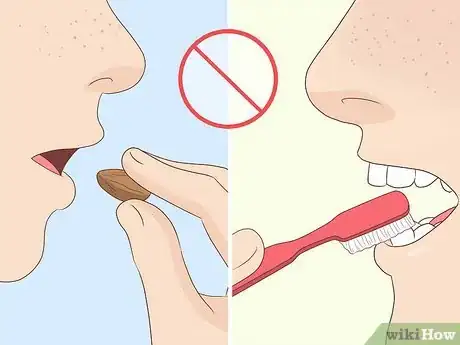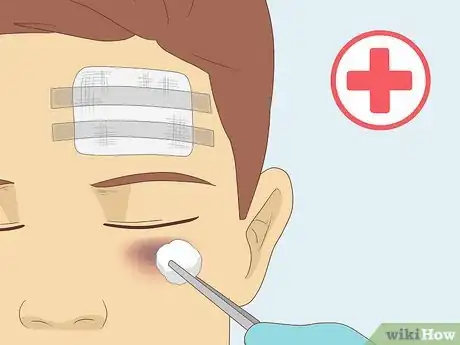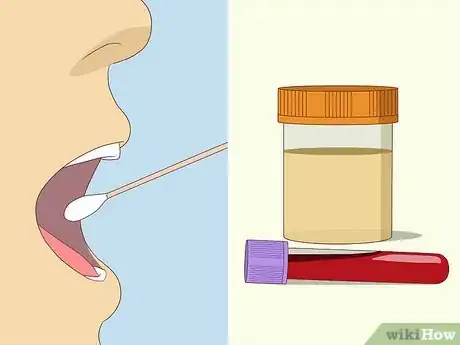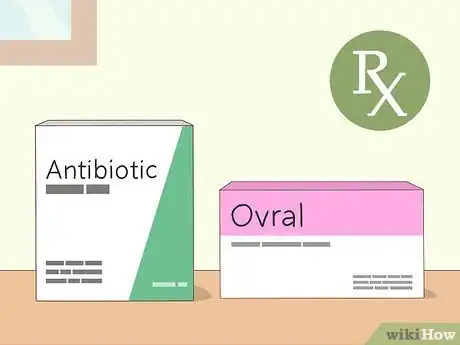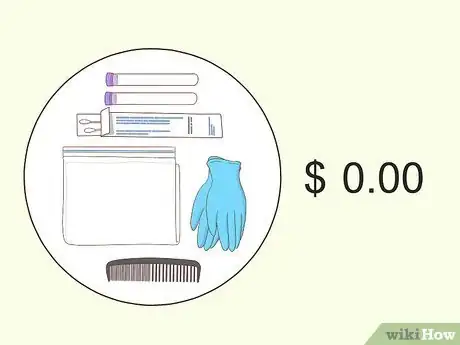This article was co-authored by wikiHow staff writer, Janice Tieperman. Janice is a professional and creative writer who has worked at wikiHow since 2019. With both a B.A. and M.A. in English from East Stroudsburg University, she has a passion for writing a wide variety of content for anyone and everyone. In her free time, you can find her working on a new crochet pattern, listening to true crime podcasts, or tackling a new creative writing project.
There are 11 references cited in this article, which can be found at the bottom of the page.
This article has been viewed 20,503 times.
Learn more...
After experiencing sexual assault, getting a rape kit may feel like an incredibly daunting and intimidating experience. This is perfectly valid and okay to feel scared and uncertain after such a traumatic experience. You don’t have to get a kit if you don’t want to, but it could possibly help local law enforcement identify and prosecute the assailant. If you have some questions about this process, you are not alone -- scroll through this list and see if these answers can ease your worries about the process.
Steps
Is there anything I need to do beforehand?
-
1Don’t take a shower or bath. It’s completely understandable if you want to wash yourself off after everything that’s happened, but try holding off for a few more hours until your rape kit is collected. If you hop in the shower you might accidentally wash off valuable evidence. [3]
- Additionally, try not to wash your hands until you’ve visited the hospital.
-
2Refrain from using the restroom. You may have to use the restroom, but try holding off until your rape kit is collected. Using the restroom puts you at risk of accidentally losing valuable evidence.
- Try not to wash your hands until you've visited the hospital.
-
3Refrain from brushing your teeth or having a snack. Wait until a trained examiner has swabbed your mouth and collected all of the evidence they need. Once your rape kit is collected, you’ll be good to go.[4]
-
4Visit the hospital before you change into fresh clothes. It's a good idea to bring a fresh change of clothes, however, the examiners will ask you to submit your old clothes as evidence. Once your rape kit is collected, you can change into fresh, clean clothes.[5]
-
5Call a loved one or advocate to go with you to the hospital if you'd like. It can be incredibly overwhelming to visit the hospital after an assault, but you don’t have to go through the process alone. All victims are welcome to bring a friend, relative, or advocate with them who will stay by their side during the exam.[6]
What happens during a sexual assault forensic exam?
-
1Your physical injuries are treated first. If you’re seriously hurt, nurses will make sure that you’re safe and stable first. The exam won’t start until you’ve been treated.[7]
-
2A special nurse or examiner will ask you about your medical history. Rape kits are usually collected by Sexual Assault Nurse Examiners (SANEs) or Sexual Assault Forensic Examiners (SAFEs or SAEs). These people are specially trained and will help walk you through the exam process. Expect questions about your current medications and medical history, as well as questions about your recent sex life. Some of these questions may be a bit uncomfortable to answer, but they’ll help your rape kit be really thorough and accurate.[8]
- SANEs or SAFEs will ask about recent consensual partners. These people won’t be judging or criticizing you whatsoever—they just need to know what DNA to exclude so they can focus on the real perpetrator.
-
3A SANE or SAFE will examine you. A trained professional will take a few swabs from your genitals, mouth, and/or anus, depending on your situation. The examiner may also collect blood, hair, and/or urine samples, or swab your skin. Your examiner will also ask you if they can hold onto your clothes from the assault, in case your garments hold any trace evidence, like hairs or fibers.[9] The examiner will also take a picture of your internal injuries with a small camera known as a colposcope.[10]
- The examiner may also ask to comb through your pubic hair as a way to pick up trace evidence.
- If you ever feel uncomfortable with any part of the exam, you can ask your examiner to stop. Your safety and comfort are most important during the exam.
- It is important to note that a majority of hospitals do not have a SANE on staff, so it is possible that an Emergency Room Nurse will be conducting your exam, however, rest assured, they are trained professionals. [11]
Warnings
- If you need a listening ear, call the National Sexual Assault Hotline at 800-656-4673. You can find international hotlines here: http://www.ibiblio.org/rcip/internl.html.⧼thumbs_response⧽
References
- ↑ http://www.endthebacklog.org/information-survivors-dna-and-rape-kit-evidence/what-rape-kit-and-rape-kit-exam
- ↑ https://www.seattle.gov/police/need-help/sexual-assault/getting-medical-care
- ↑ https://www.seattle.gov/police/need-help/sexual-assault/getting-medical-care
- ↑ https://www.seattle.gov/police/need-help/sexual-assault/getting-medical-care
- ↑ https://www.seattle.gov/police/need-help/sexual-assault/getting-medical-care
- ↑ http://womensfreedomcenter.net/get-help/sexual-assault/after-an-assault/
- ↑ https://www.rainn.org/articles/rape-kit
- ↑ https://www.rainn.org/articles/rape-kit
- ↑ https://www.rainn.org/articles/rape-kit
- ↑ https://time.com/3001467/heres-what-happens-when-you-get-a-rape-kit-exam/
- ↑ http://womensfreedomcenter.net/get-help/sexual-assault/after-an-assault/
- ↑ https://time.com/3001467/heres-what-happens-when-you-get-a-rape-kit-exam/
- ↑ https://www.rainn.org/articles/rape-kit
- ↑ http://womensfreedomcenter.net/get-help/sexual-assault/after-an-assault/
- ↑ http://womensfreedomcenter.net/get-help/sexual-assault/after-an-assault/
- ↑ https://www.rainn.org/articles/rape-kit
- ↑ https://www.nhs.uk/live-well/sexual-health/help-after-rape-and-sexual-assault/
- ↑ https://www.breakthecycle.org/blog/reporting-sexual-assault-police
- ↑ https://www.rainn.org/articles/rape-kit
- ↑ https://www.surviverape.org/forensics/sexual-assault-forensics/answers-to-faq
- ↑ https://www.rainn.org/articles/rape-kit
- ↑ http://womensfreedomcenter.net/get-help/sexual-assault/after-an-assault/
- ↑ https://www.rainn.org/articles/reporting-law-enforcement




